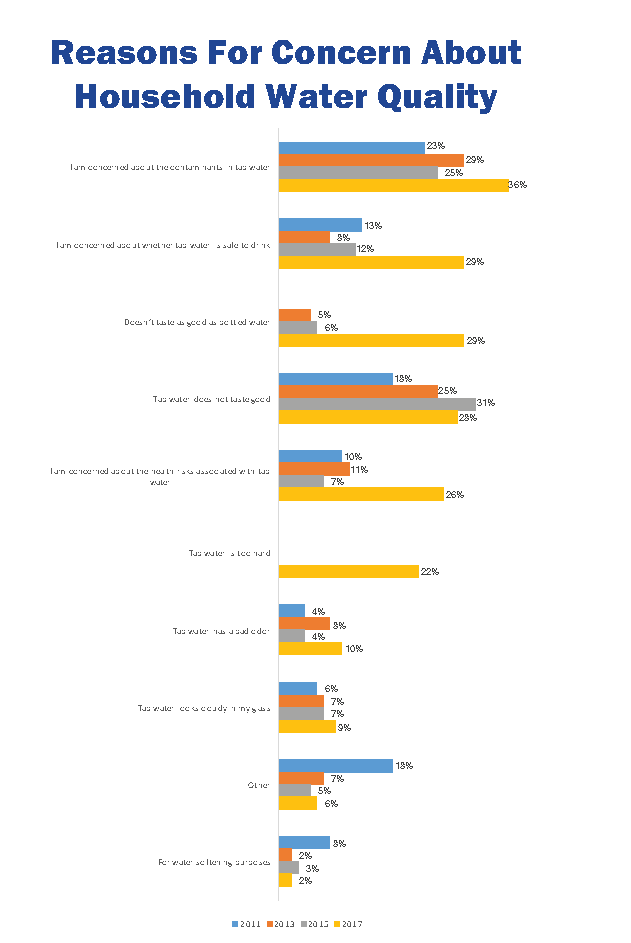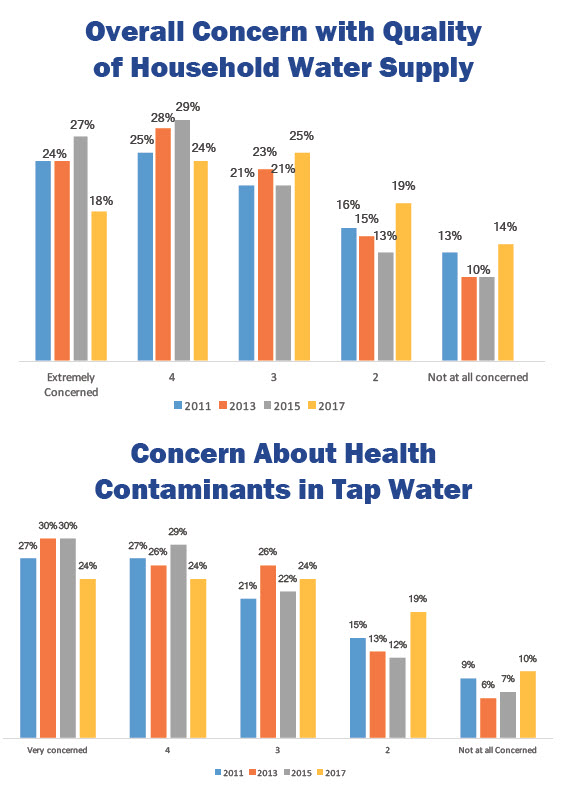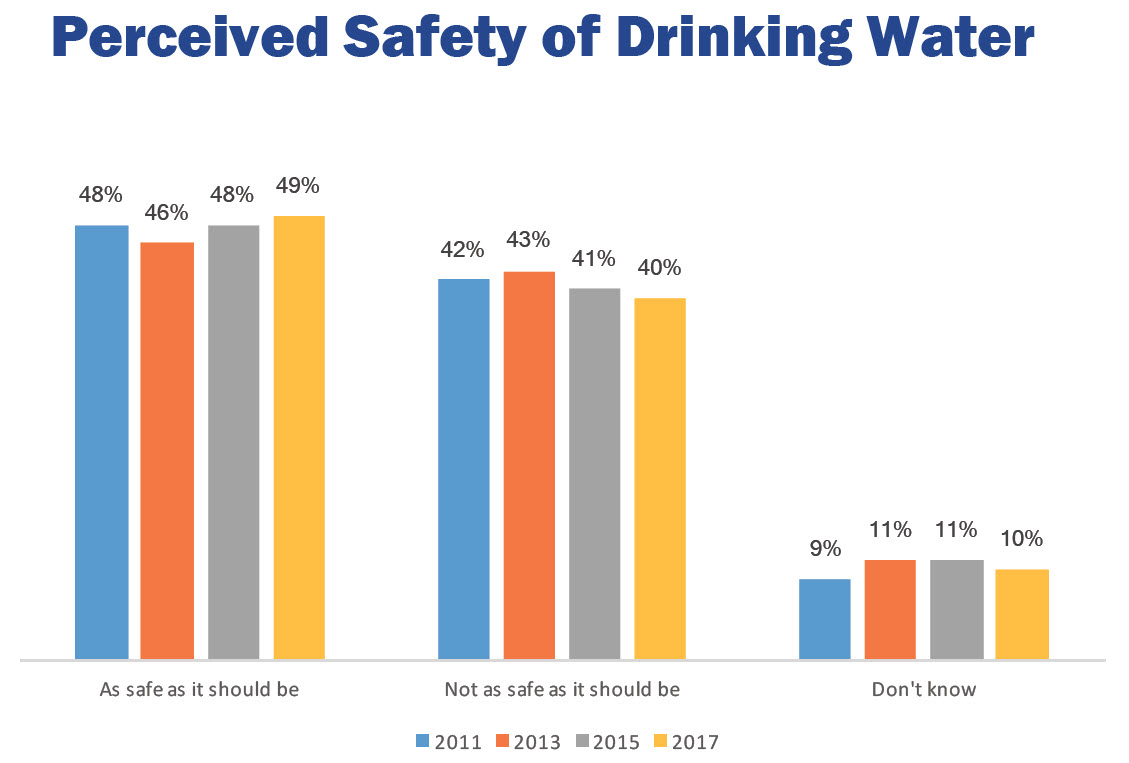Water Quality Association survey: concerns over contaminants
A recent national poll revealed high levels of concern over water quality, especially lead contamination. The Water Quality Association survey also found that 52% of Americans think that federal laws governing drinking water quality are not strict enough.
“News coverage of the Flint, Michigan lead crisis likely played into the rise of awareness of water quality issues from the news media,” Water Quality Association Executive Director Pauli Undesser said in a press release. “This might have also contributed to the increase in the number of respondents who identified lead as a possible water contaminant.”
In the graphic below (click to enlarge), the yellow bars plot data from the 2017 survey and show a significant uptick in concern about water contaminants. For example, 29% of respondents in 2017 said “I am concerned about whether tap water is safe to drink,” much higher than the 8% to 13% range in the 2011, 2013, and 2015 surveys. Likewise, 26% percent of those surveyed in 2017 said “I am concerned about the health risks associated with tap water,” up from the 7% to 11% range in prior surveys.

Source: Water Quality Association
The February 2017 survey, conducted by Applied Research-West, Inc., is based on interviews with 1,711 adults. It has a margin of error of +/- 2.2%. This is the sixth time in 13 years that the Water Quality Association has conducted such a poll. The Water Quality Association is a non-profit that represents the residential, commercial, and industrial water treatment industry.
The graphic above illustrates a sizable, recent shift in opinion. But some of the other data in the Water Quality Association survey revealed less dramatic changes, or even less concern than in prior surveys. The charts below show that the percentage of people who were the most concerned about water quality and contaminants in tap water was even higher in the 2015 survey.

Source: Water Quality Association
Although year-to-year changes are interesting, I believe the more striking finding is the persistently high levels of concern about the safety of drinking water. Regardless of the year, there weren’t many Americans who said they were “not at all concerned” about their water quality. The graphic below drives home that point: only around half of Americans said their drinking water is “as safe as it should be,” while around 40% percent felt it was not.

Source: Water Quality Association
Among the other findings from the survey:
- Three-quarters of respondents believe that their municipality has the primary responsibility for ensuring safe drinking water.
- Contamination triggers people to buy water filters: 41% said they had purchased a filtration device after an “unsafe water for use” or “boil-water alert” was issued in their area.
- The number of people who said they learned about health contaminants from the media increased from 27% in 2015 to 43% in 2017
- More than half of those surveyed said they’re willing to pay more for home water treatment systems to remove lead (63%), arsenic (60%), pharmaceuticals (57%), and other contaminants.
WaterPolls.org aggregates, analyzes, and visualizes public opinion data on water-related issues. Stay informed via Twitter, Facebook, Pinterest, RSS, and email.











